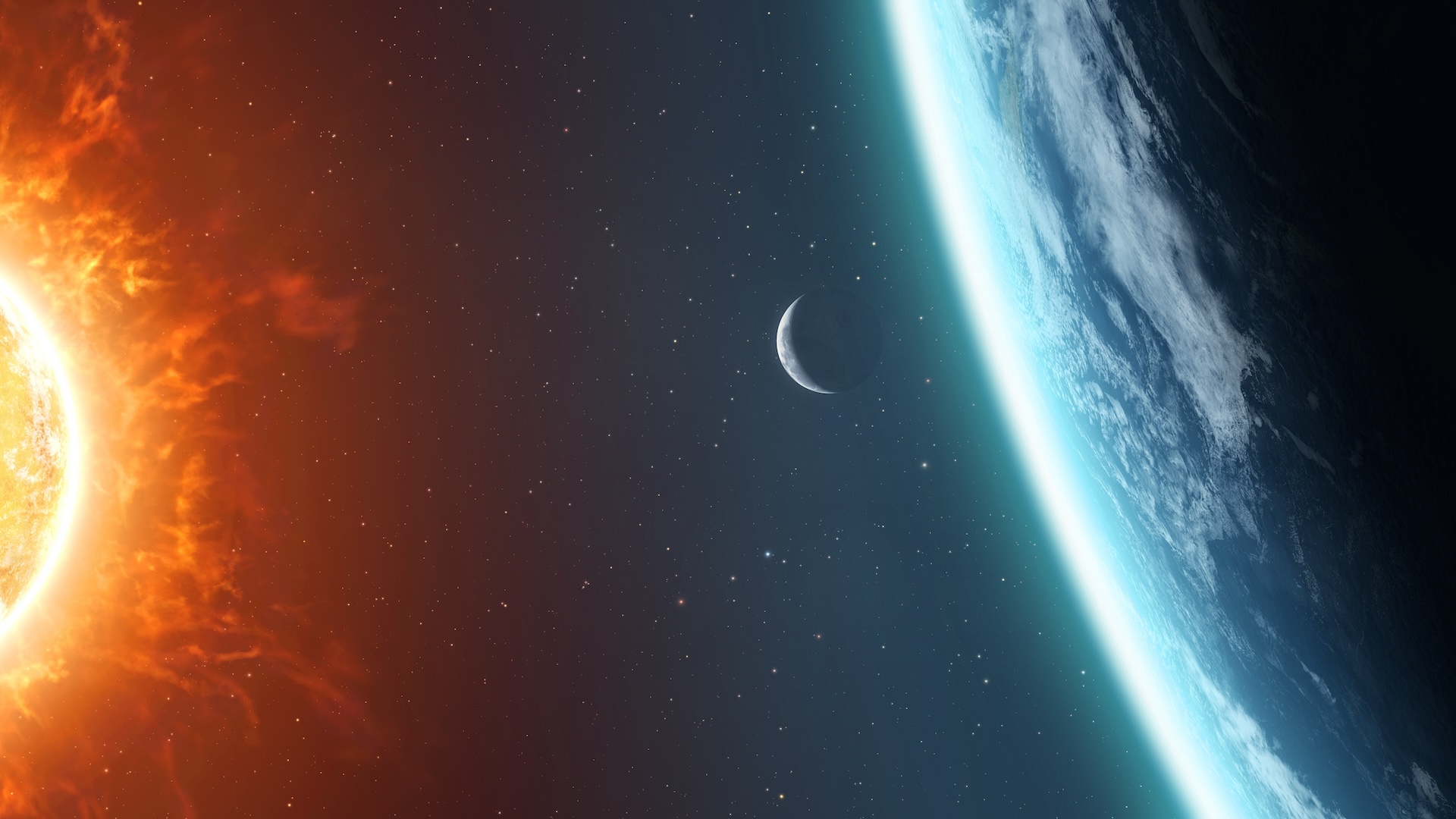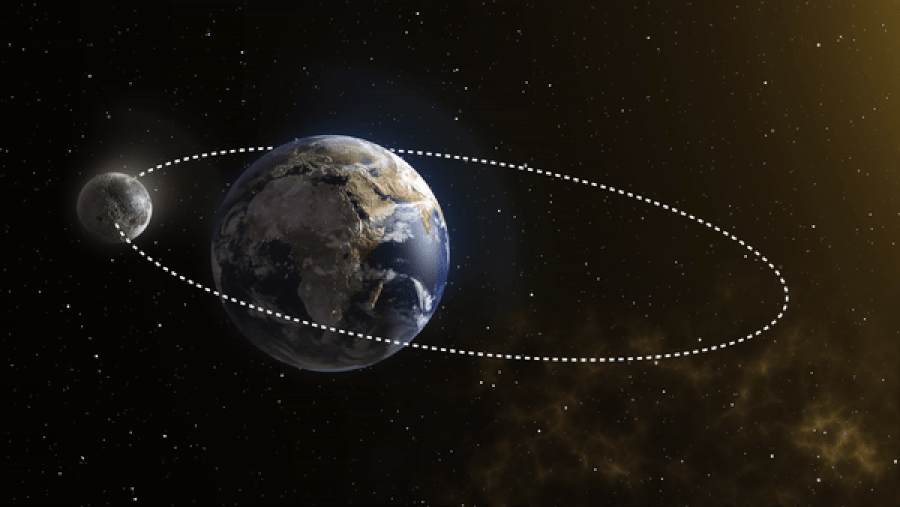How far away is the moon?
The moon's distance from Earth changes depending on where it is in its elliptical orbit.

It may seem like a question with a simple answer: How far away is the moon? But the distance between Earth and our closest neighbor is more nuanced than a single number.
"The commonly quoted average distance of 384,400 kilometers, or 238,855 miles, is a good approximation," said Craig Hardgrove, an associate professor of Earth and space exploration at Arizona State University and principal investigator on LunaH-Map, a remote mission designed to detect ice deposits on the moon.
However, the moon's orbit around the Earth is elliptical, so its distance from Earth varies," Hardgrove told Live Science in an email.
That distance ranges from roughly 221,500 miles (356,470 km) away at its closest point to Earth, called perigee, to 252,000 miles (405,600 km) away at its farthest point, called apogee, Hardgrove said.
The distance at apogee is so great, the solar system's seven other planets (Mercury, Venus, Mars, Jupiter, Saturn, Uranus and Neptune) could fit between Earth and the moon, astronomer Phil Plait wrote for Slate. This thought experiment works if the average diameters of the planets are added together, which equals 236,100 miles (380,016 km).
Related: Have days on Earth always been 24 hours?
We can thank the Apollo astronauts for the accuracy of these measurements, Hardgrove said. Using reflectors left on the lunar surface in the 1960s and '70s, scientists today can shine high-powered lasers at the moon and measure their reflection speed to determine the satellite's distance from Earth.
Get the world’s most fascinating discoveries delivered straight to your inbox.

In fact, the moon shines 30% brighter — and appears 14% larger in diameter — during perigee than when it's at apogee, Hardgrove noted.
"These changes are sometimes referred to as a 'supermoon' when the Moon is closest and as a 'micromoon' when it is furthest away," he said. While both the moon's distance and its phases follow the same roughly 27-day lunar cycle, they are not directly related, Hardgrove said.
In most cases, the average distance between Earth and the moon is accurate enough for the general public, Hardgrove said. However, some cases — such as planning a mission to orbit or land a spacecraft on the moon — require a more precise measurement. Luckily for lunar researchers, these considerations are much less daunting than for missions to Mars, which has a distance variation of 35 million miles (56 million km), compared with the moon's roughly 31,000 miles (50,000 km).
"The variation in distance between perigee and apogee … can affect travel time by a small margin," Hardgrove said. "[But] other factors, like trajectory, landing site conditions, and solar illumination, tend to be more important considerations for Moon missions."
Noah Petro, a project scientist for NASA's Lunar Reconnaissance Orbiter, said we're lucky to catch the moon at a particularly special part of its journey away from Earth.
"Early in lunar history the Moon was much closer [but it] has been slowly drifting from the Earth for over 4 billion years," Petro told Live Science in an email. "We're fortunate to be around at this time where the Moon is at its current range in distances since we can get those magical moments where the Moon blocks the Sun and we get total solar eclipses."

Sarah is a D.C.-based independent science journalist interested in the philosophical questions of science and technology and how research intersects with our daily lives. Her work has appeared in Popular Mechanics, IEEE Spectrum, Inverse, and Nature, among other outlets, and covers topics ranging from AI to particle physics and space travel. She has a master's degree in science journalism from Boston University.



